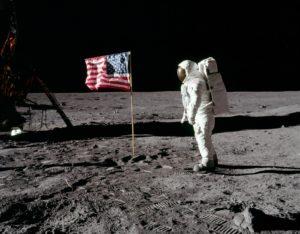
Until last year, the Columbia was protected by a sheet of Plexiglass in the Smithsonian National Air and Space Museum, where it has been sitting since the museum opened in 1976. But in December 2015, the Plexiglass was carefully removed so that Adam Metallo and Vince Rossi, 3D digitization program officers at the Smithsonian Institution, could scan the entire thing, inside and out. Over the next two weeks, they utilized six different capture methods and over $1.4 million worth of equipment to obtain meticulously detailed images of the module.
Because they weren’t allowed to climb inside or even touch the module, scanning it was challenging work that the team circumvented by attaching cameras and laser scanners to mechanical arms which were carefully inserted into the module. They were determined not to miss a single tiny detail.
“That’s integral to the story that we want to tell by scanning this object: what it’s like in there,” Metallo said. “We can see the conditions that these astronauts went through and lived with. By scanning the interior with such fidelity and expressing that in 3D models online and potentially in virtual reality, we’re going to be able to give the public a really profound experience and understanding of the object.”
And that’s exactly what the public will get. In honor of the anniversary of the moon landing, the scan data collected by the Smithsonian has been released online in the form of an incredible 3D model that lets viewers see exactly what astronauts Neil Armstrong, Edwin “Buzz” Aldrin and Michael Collins saw during their journey to the moon.
The data gathered by the Smithsonian included about 50 laser scans and thousands of pictures taken with 5DSR cameras. Once the imaging was complete, collaborators at Autodesk converted it into the 3D model you can now see online. Traditionalists, however, need not worry – the 3D model is in no way intended to replace the module itself, which will be moved the the Air and Space Museum’s new “Destination Moon” gallery, scheduled to open at the end of the decade. One year ago today, on the 46th anniversary of the first lunar landing, it was also announced that Neil Armstrong’s preserved suit will also be present in “Destination Moon”.
“That experience of ‘I actually stood next to the only part of that spacecraft that in 1969 took three astronauts to the vicinity of the moon and two of them to the surface—I stood next to it,’ that iconic feeling of being next to the real thing will be there,” said Allan Needell, curator of the museum’s Apollo collections. “…The artifact is not to be replaced by digital archives. They complement each other.”
Discuss further over in the Apollo 11 3D Model forum at 3DPB.com.